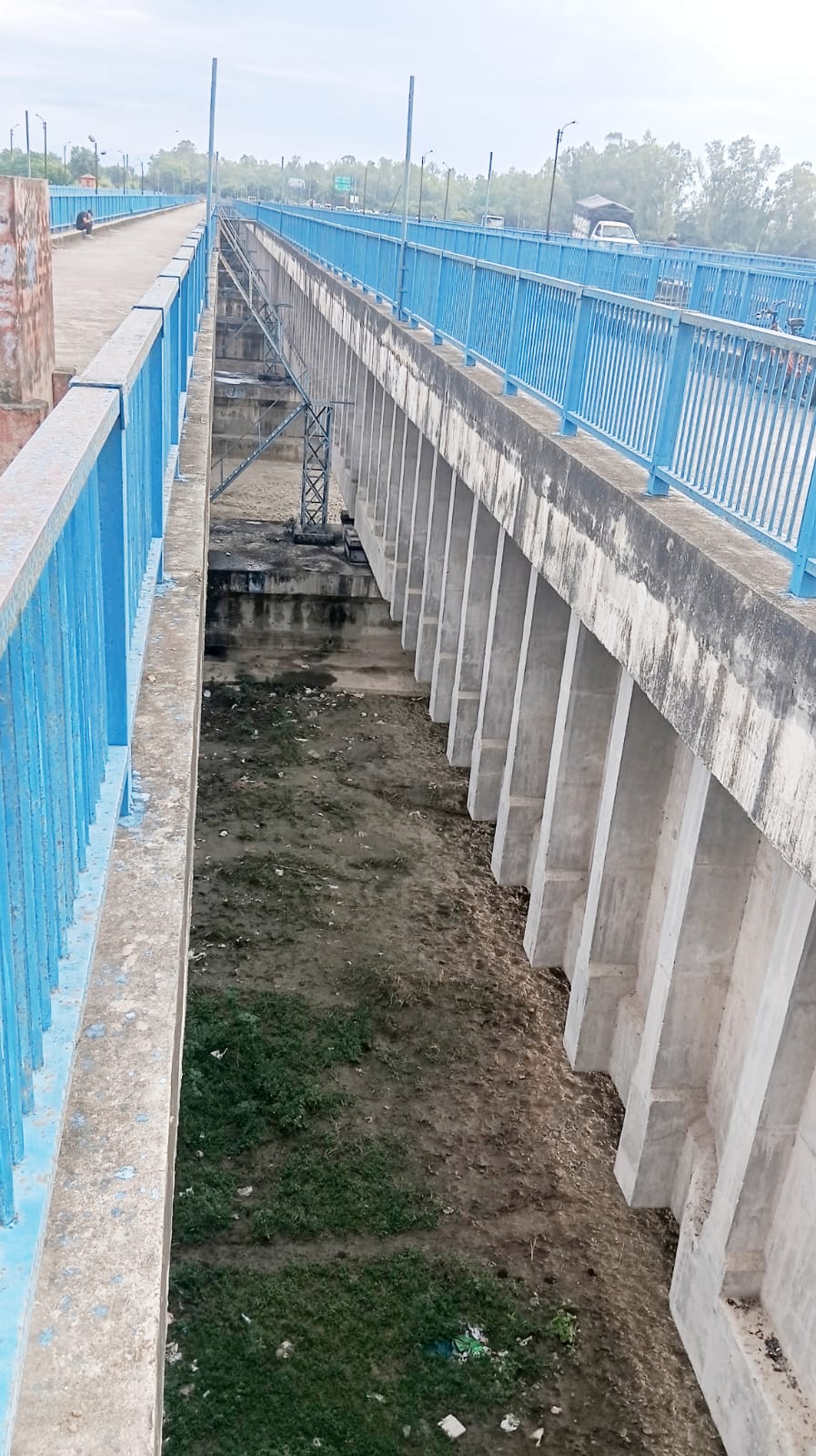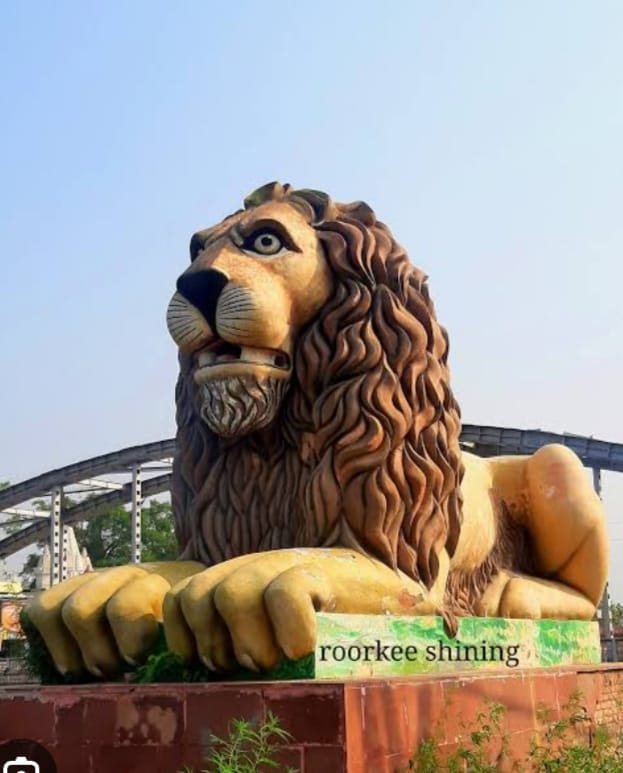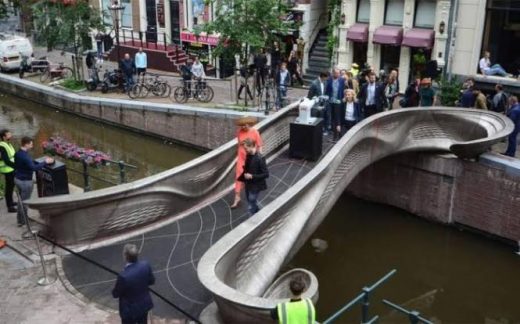By
Kaushal Kishore
Materials Engineer, Roorkee
The new Solani aqueduct on Ganges canal Roorkee was built with prestressed concrete which allows for longer spans and a simple more robust design compared to old bricks, lime- surkhi mortar masonry arches of the old aqueduct, in which 8.5 crores bricks were used, while iron railing used in the sides of two lanes were imported from England. This is interesting to note that materials bringing those days on ship from England to Indian ports take 6-10 weeks via the Suez canal or 3 to 6 months via the longer Cape of Good Hope. Calculate in it also time taken on road from Indian ports to Roorkee.
After retirement from University of now IIT Roorkee I joined M/S Roffe Construction Chemicals Pvt.Ltdd, Mumbai as it’s Chief Concrete Technologists afterwards I became it’s one of the Director.

AQUEDUCT picture taken on 7/10/2025
For the contractor of above aqueduct I designed M-40 grade of concrete with Roffe superpladticizer. Those interested may read my paper by visiting Google site and log in; Civil engineering portal The Ganges canal by Kaushal Kishore.
I had designed numerous concrete mix design almost all cements of India in this I find Utra Tech cement as one of best cement OPC and PPC both With Ultratech cement I had designed numerous concrete mixes from ordinary strength to M-80 grade concrete, self compacting concrete, shot crete concrete, fibre reinforced concrete, fly ash concrete and more There is life after retirement and after retirement I worked for 30 year’s which includes in free time working in home research and testing laboratory and numerous construction sites visits almost all India and outside India. At my age of 92 years I still work for 12 hours daily.
I had never worked for money. In spite of doing so gigantic work what to say about car I even do not have 2 wheeler not any of my house not a single inch of land in this world only pension from IIT Roorkee and few clothes


























hello people,
i wanted to know if we civil engineers can do masters in petroleum.
regards
dear everybody, could anyone help me in getting details for formwork for a hemispehrical dome of 22ft dia
Dear sir,
If a concrete design mix of M 25 is done at laboratory with some proportion and at site during construction work it is found that result is M 35 after 28 days. whether the test result of field is accepted or not? if yes/no why???
it is not possinble because at site u do the same procedure with the same materials you are
using
pls tell me what kind of course should i do as i have 20years of civil construction experience i have done 2 years of civil engineering but did not complete diploma, now i wish to take some kind of diploma along with my work pls guide me.
sir,Now i am a student i want to know how can we chaining across a sloping ground with perfect accuracy?
Hi,
I m doing my II yr in Civil Engineering at NITT..I would like to do an IPT/Intern..It would be great if could get some guidance.Waiting for a reply…
My brother has passed the HSC in Commerce Stream. Now he is doing Bcom Final year.
Can he do the Diploma in civil engineering
Sir, I want Know about the Calculating of designee mix concrete
pls send me mail about interview questions and concrete test
Here is the list of the most commonly asked questions during the interviews.Hope this helps to most of you
1.Introduce yourself?
2. What are your career preferences?
3. How much salary you are expecting?
4. What is your plan regarding continuing your education?
5. Tell us about your hobbies?
6. What are your strengths & weaknesses?
7. Are you ready to work in a team?
8. Can you work in stress?
9. What good things you liked in your ex boss?
10. How do you feel working on weekend?
11. Define success?
Pl be specific: which test you want to elaborate?
We are estimate for R.C.C road approx 95000 sft how to steel caluclate as per structral drawing. 8″ c/c. The road thickness 8″ concrete. please send the steel formula. the road size 30ft x 4000ft.
My dream is to become the best Civil Engineer in Kenya.
I have done my B. Sc. Engg in Civil from RECK Kurukshetra, in 1976. Since then I have been practicing in the civil construction and project management.I find this portal technically quite informative and fullness for civil Engineers.I shall prefer to in touch with this portal.
Hi sir,
I am a student of 2nd year Civil and architectural Engineering, I was planning to do BEng. & later followed by project management. Do u think its a wise choice to make?? does it pay off well enough.?? I would be really glad If you could just guide me a bit.
Thanking you.
why we use composite super structure in bridge ?
This is peculiar type used only where the bridge crosses a road r a railway line, and to limit the depth we are using composite type superstructure.
because bridge is used to construct across any obstruction such as river ,roadways in those condition we have less place of supports in intermediate of bridge ,there fore we have to design a bridge , in load transfer point of view ,its take place in super structure so the composite construction is good for bridges
Plz.. give me some idea about structure analysis project
What is the size of test specimen used to determine the modulus of rupture?
i want all type steel’s weight per meter…….
formula for unit wt. of steel per meter=Dia.Squre/162.2
i have done by completed b tech civil engineering completed in 2011.iam so happy ,because clear information in civil portal . thanks for the portal team .
Hi everyone..I am already completed my BEng Honours in civil engineering and i will soon be going for interview to get myself registered with the Council of Registered Professional Engineers..Can anyone please give me an idea of the questions that are asked during the interview..Thanks a lot..
hi sir, i finished my mtech.Further i choose my profession is teaching. How to guide students. give me suggestions sir reply me sir
pls send me a mail about the use of cassava peel in testing the tensile strength of concrete and shear strength of concrete